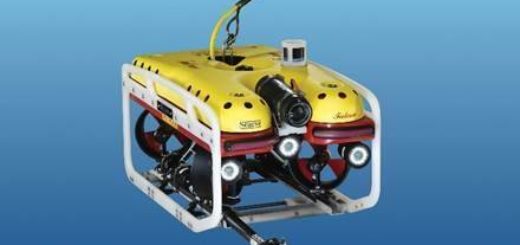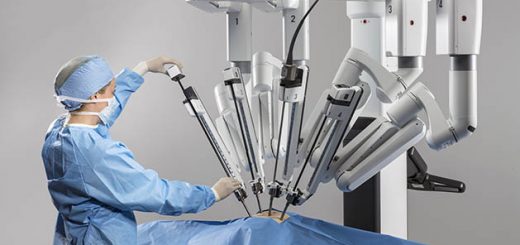Parallel robots advantages, disadvantages, What can Parallel Robots do?
Parallel robots are also sometimes called parallel manipulators, They are a distinct type of robot defined by their unique mechanical structure. Parallel robots can handle Tasks like milling, drilling, and cutting often involve manipulating heavy tools with precise control, and effectiveness.
Parallel robots
Parallel robots are used in medical applications like surgical robots requiring precise manipulation, 3D printing for fast and accurate material deposition, and quality control tasks involving delicate object handling. Parallel robots excel in scenarios demanding high speed, precision, and payload capacity within a well-defined workspace.
Interestingly, the name “parallel” doesn’t refer to the actual geometric arrangement of the limbs. Instead, it highlights that these limbs operate in parallel, meaning they all contribute simultaneously to the movement of the platform. Their high speed, precision, and payload capacity make them ideal for various tasks:
- Fast pick-and-place operations in assembly lines (e.g., food packaging).
- Flight simulator platforms for realistic motion simulation.
- Machine tool applications that require high precision and stiffness (e.g., drilling, milling).
- Medical rehabilitation robots can assist patients with movement therapy.
Structure of parallel robots
Unlike traditional serial robots with a single chain of joints, parallel robots have multiple independent linkages (usually 3 or 6) connecting a fixed base to a moving platform and working together. Imagine an umbrella where the ribs (linkages) support the platform (end effector) from a fixed base. These linkages are identical for simplicity and connect the moving platform to the stationary base in a distributed manner.
The multiple linkages operate simultaneously to position and orient the end effector. This allows for high-precision and high-speed movements. The name “parallel” doesn’t imply the linkages are geometrically parallel but refers to their parallel function of supporting the platform.
What is the use of Parallel robots?
Parallel robots are used in tasks that demand a combination of three key strengths: speed, precision, and handling hefty objects (payload capacity). Imagine a factory assembling electronic devices. Tiny components need to be quickly and accurately placed on a circuit board.
The fast and precise movements of parallel robots, especially Delta robots with three arms, make them perfect for such high-speed pick-and-place operations. Their rapid movements and precise control make them perfect for fast sorting, packing, and assembling tasks in industries like food and electronics. Imagine a robot swiftly placing delicate chocolates into boxes at lightning speed.
The food packaging industry requires robots that can handle delicate items like fruits and vegetables at high speeds. Parallel robots excel at this due to their precise control and ability to maneuver within a defined workspace.
Parallel robots are valuable tools in various industries when high speed, precision, and payload capacity are crucial within a well-defined workspace. Flight simulators need to provide a realistic experience for pilots. Parallel robots with hydraulic actuators can create highly dynamic and accurate movements, replicating the forces experienced during flight.
Tasks like high-precision milling, drilling, and cutting benefit from the rigid structure and high payload capacity of parallel robots. They can handle heavy tools while maintaining the accuracy needed for intricate machining processes.
While less common currently, some research explores using parallel robots for surgical tool manipulation or rehabilitation equipment due to their precise movements. Their strong structure and precise movements can be beneficial in tasks like:
- Docking mechanisms: Aligning components for precise assembly (e.g., car wheel installation).
- Material handling: Lifting and moving heavy objects with high accuracy (e.g., large engine components).
Parallel robots excel in high-speed, high-precision applications with a well-defined workspace. Their simple arm design and high payload capacity make them attractive for specific tasks. However, their limited workspace, complex control, and potential for singularities require careful consideration during robot selection.
Parallel Robot Advantages
Their rigid structure and distributed actuators minimize flexing and vibration, allowing for very precise and fast movements. This makes them ideal for tasks like pick-and-place applications or high-speed machining.
The distributed actuator design allows them to handle heavier loads compared to similarly sized serial robots, and create a very stable platform, enabling them to handle larger payloads compared to their size.
The actuators are often located at the base, reducing the weight on the moving arm and simplifying its design. The parallel linkage system provides a very stable platform with high resistance to external forces. Individual linkages tend to be simpler, reducing complexity and potentially lowering maintenance costs.
Certain parallel robot designs, like the Stewart Platform, can achieve complex motions and high maneuverability. Calculating the required actuator movements for a desired end-effector position (inverse kinematics) is often simpler for parallel robots.
Parallel Robot Disadvantages
Their design often restricts their reach and movement range compared to serial robots. They may not be suitable for tasks requiring a large operational area or a lot of flexibility or obstacle avoidance.
Calculating the movement of the end effector based on actuator positions (forward kinematics) can be more challenging compared to serial robots.
Certain joint configurations can lead to singularities, where small actuator movements cause very large or undefined movements in the end effector. Careful design is needed to avoid these zones.
The precise coordination of multiple actuators can require complex calibration procedures. Certain configurations can cause the robot to lose dexterity or become uncontrollable, and this is known as singularities.
You can subscribe to Science Online on YouTube from this link: Science Online
You can download Science Online application on Google Play from this link: Science Online Apps on Google Play
Serial Robots review, advantages, disadvantages and what can serial robots do?
Collaborative robot arm (cobot robots) applications, uses, advantages and disadvantages
Automation in manufacturing uses, advantages and disadvantages
Industrial robot (Auto industry) uses, advantages and disadvantages




